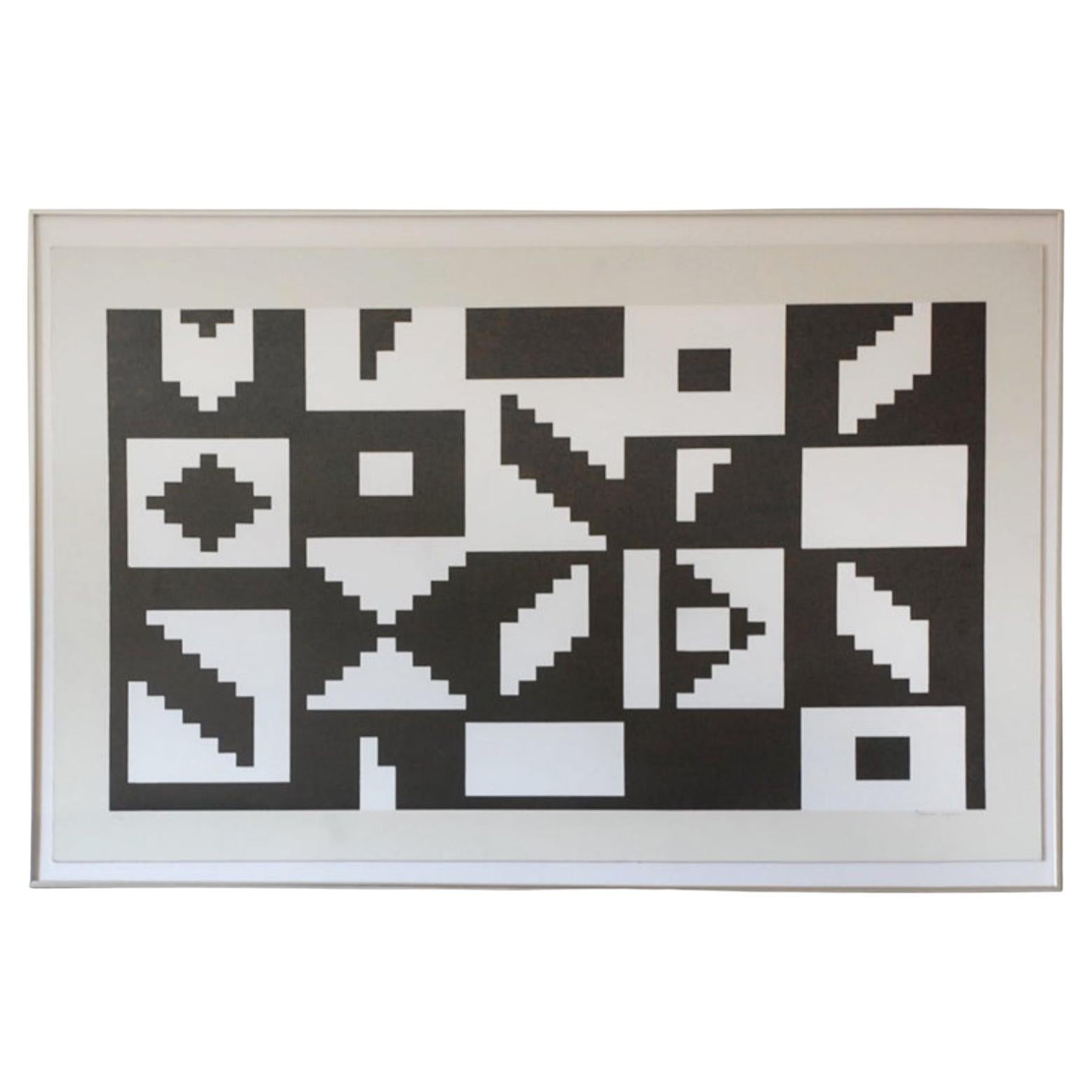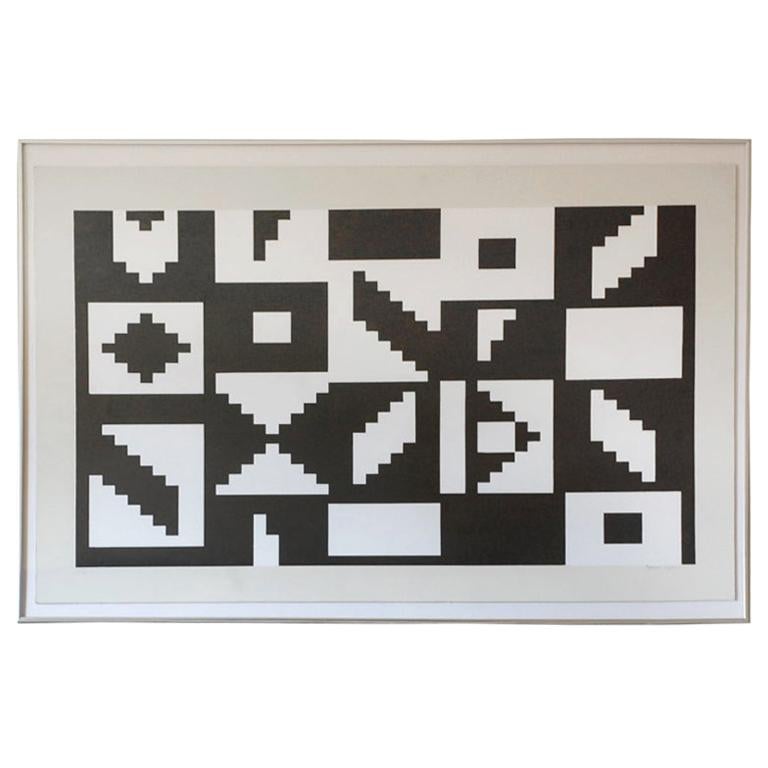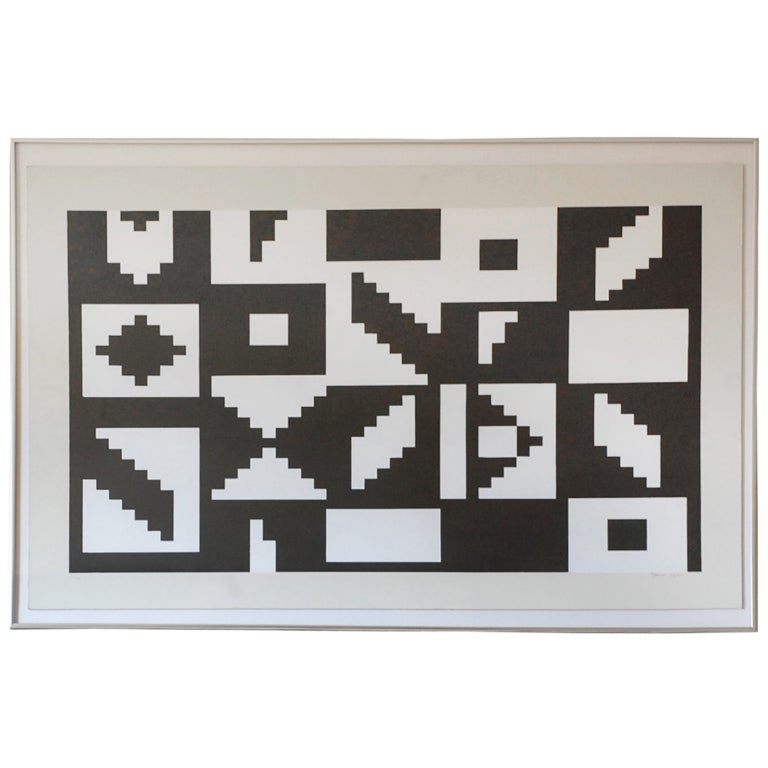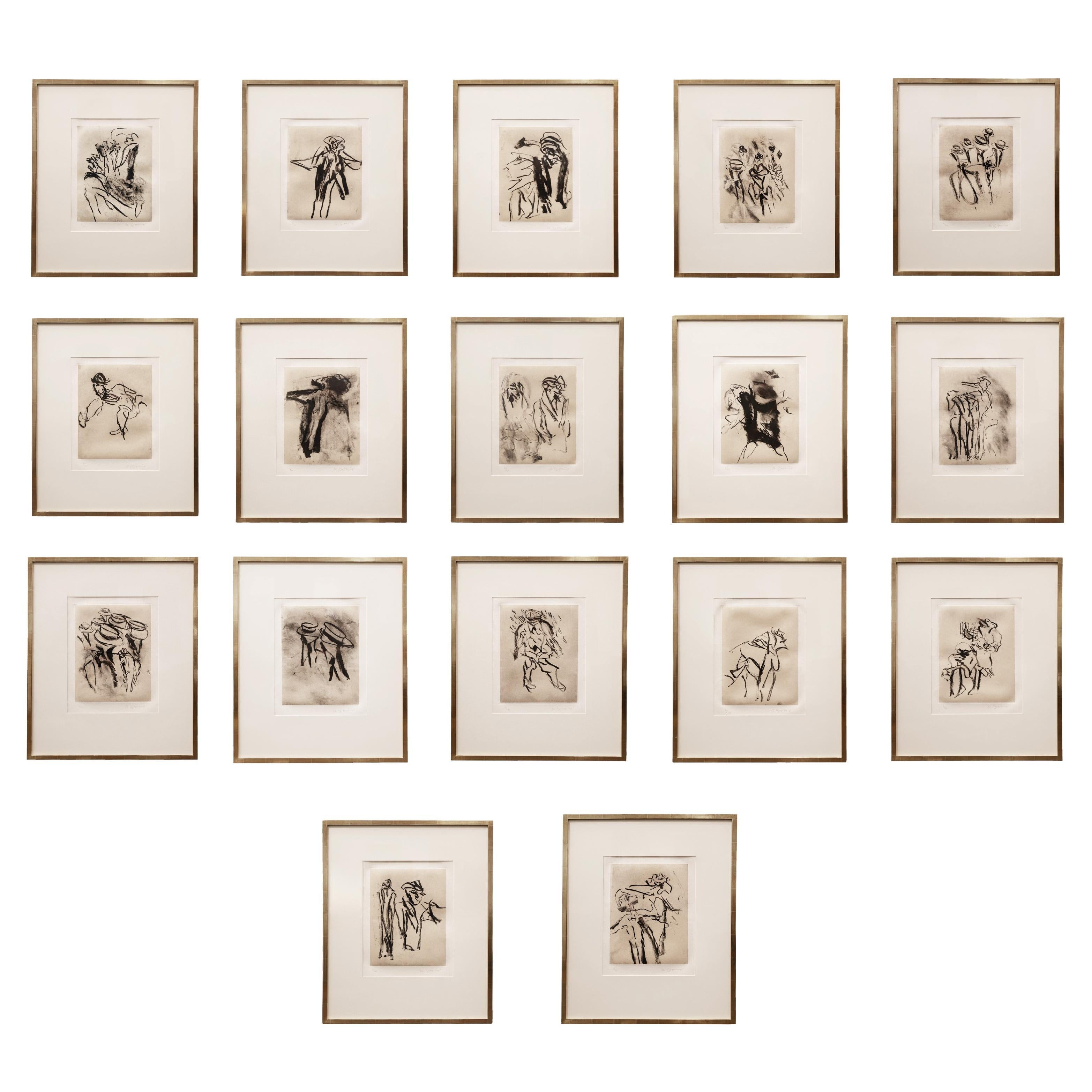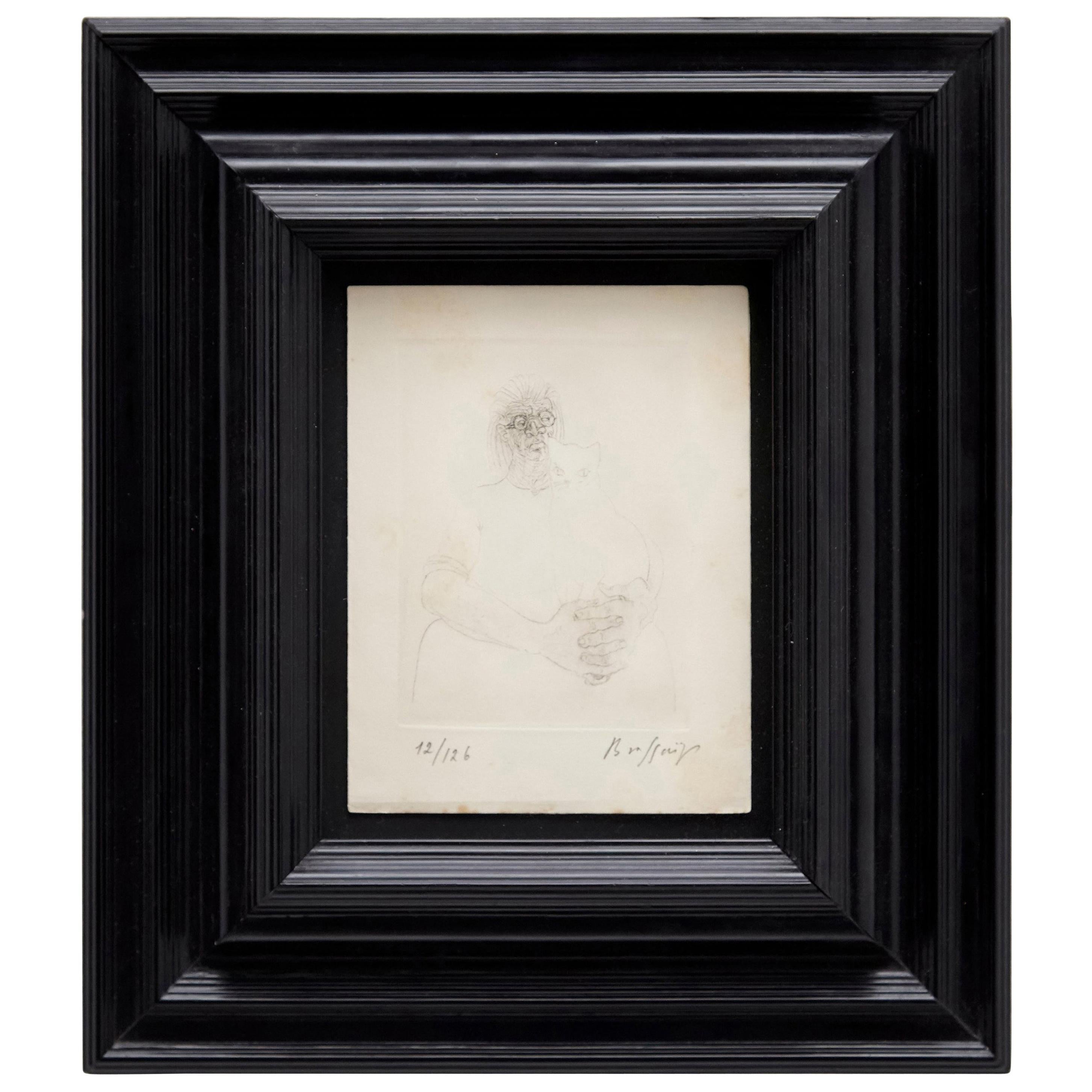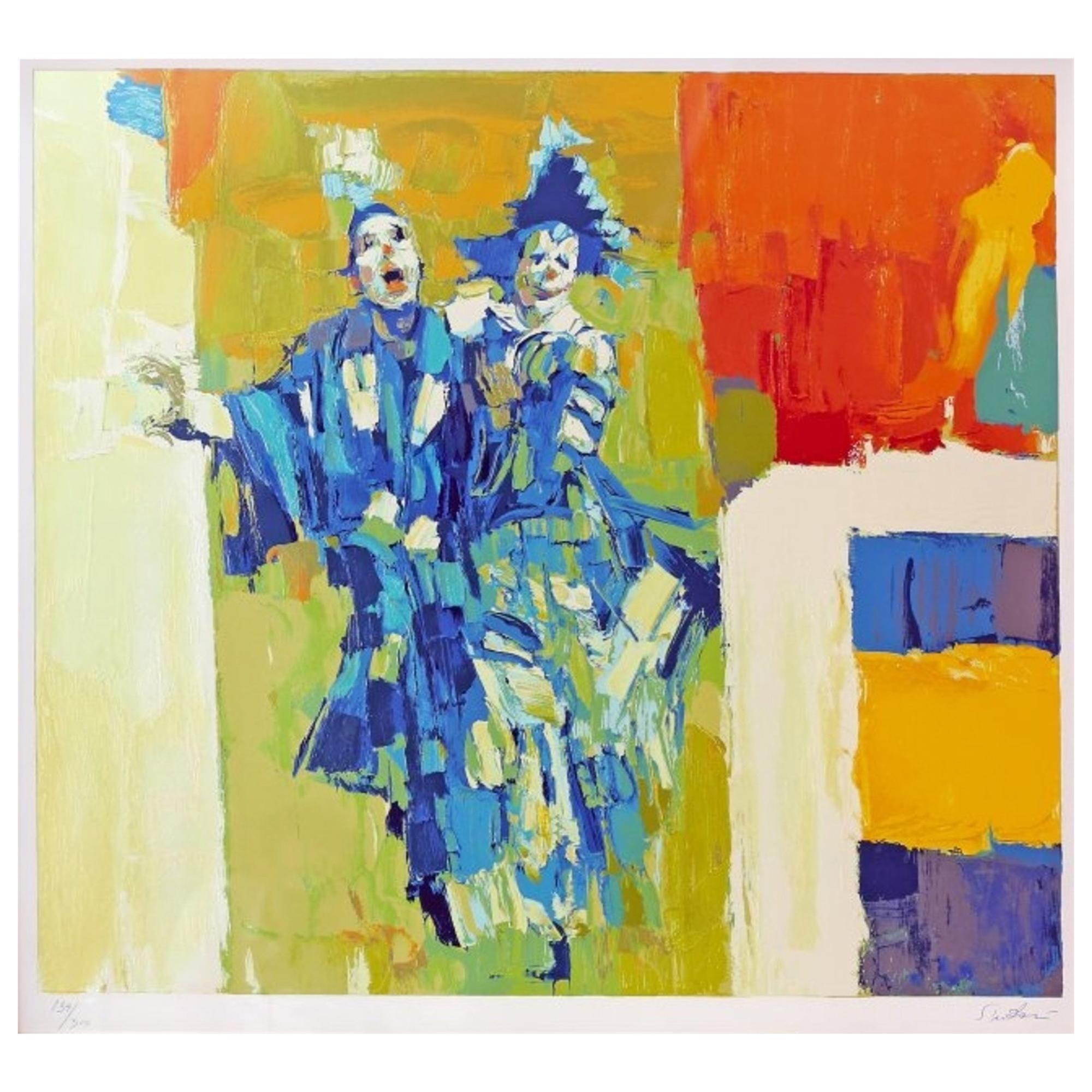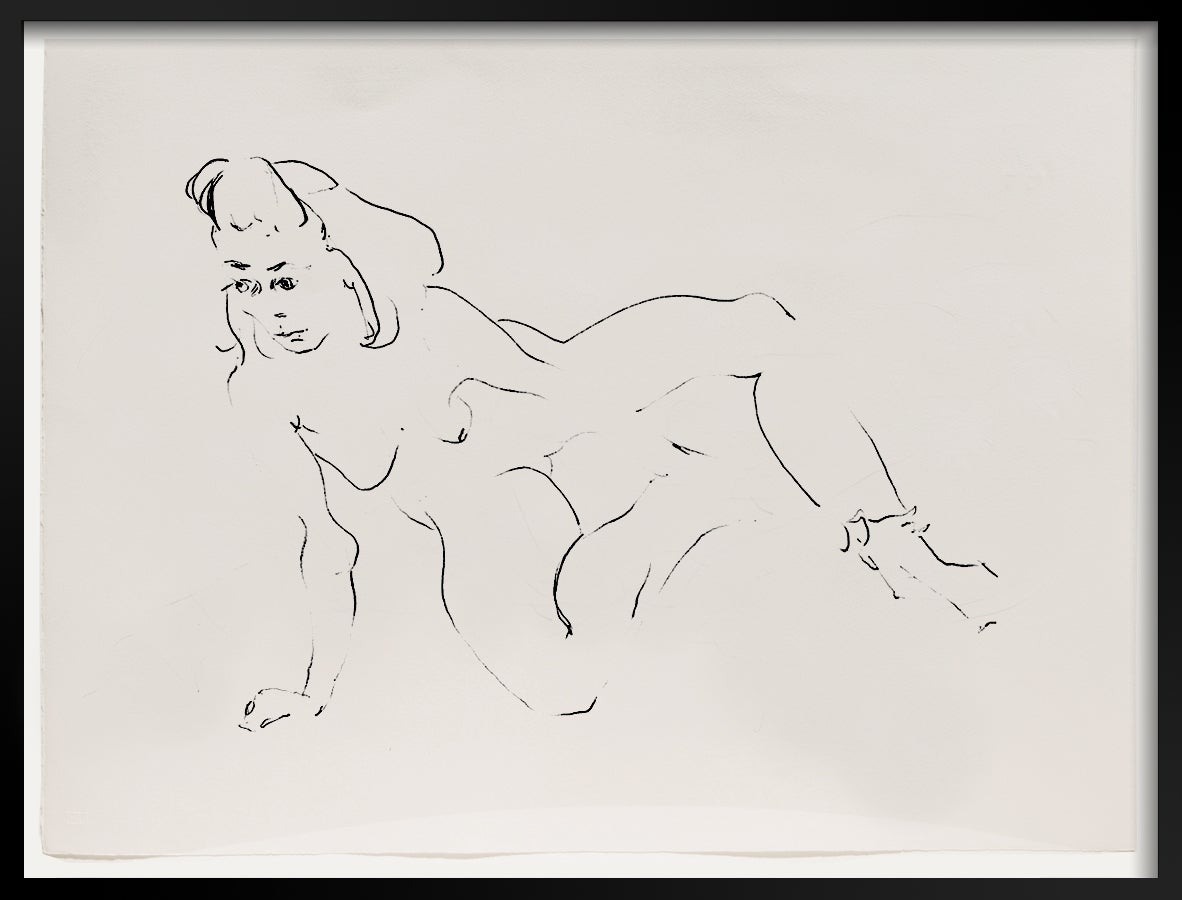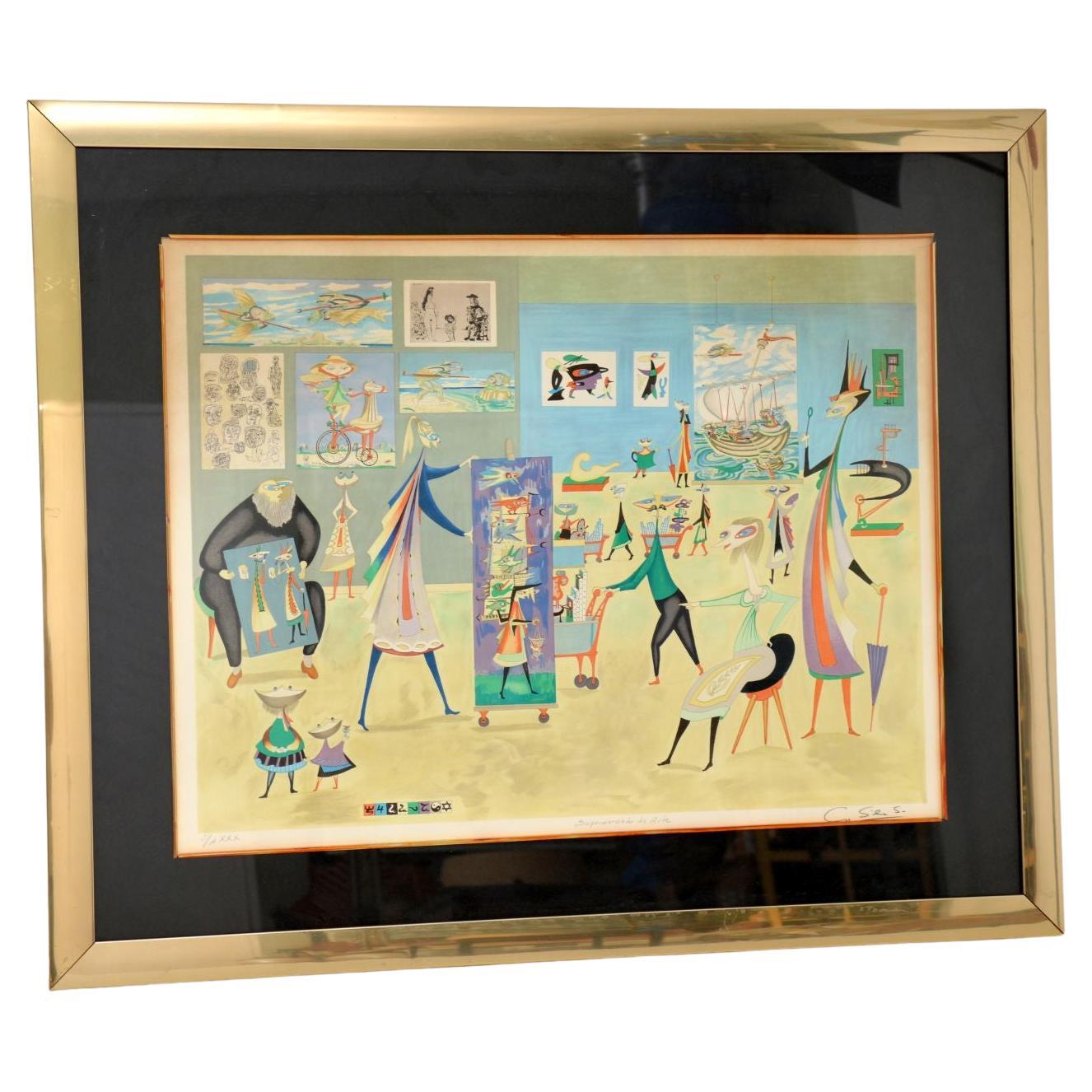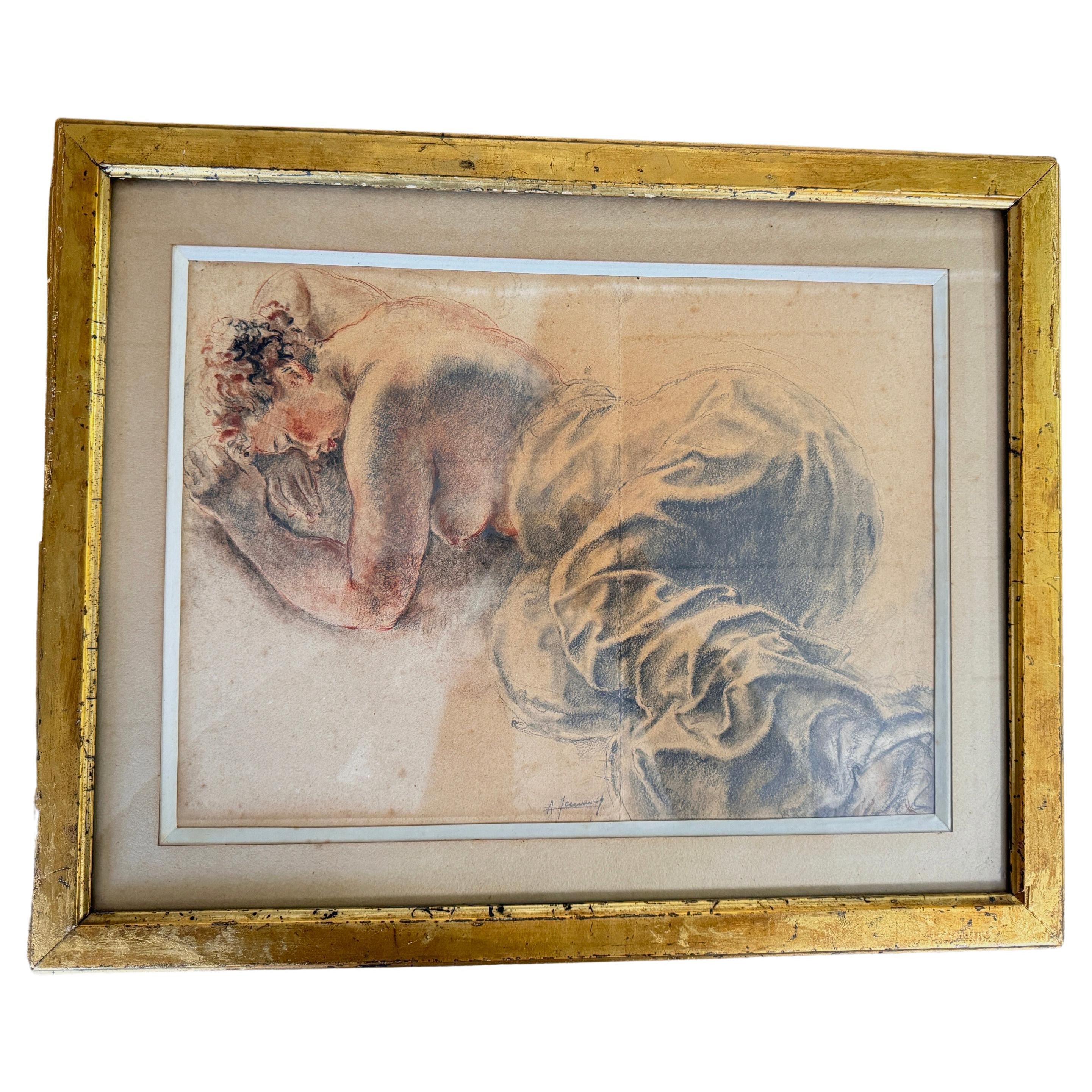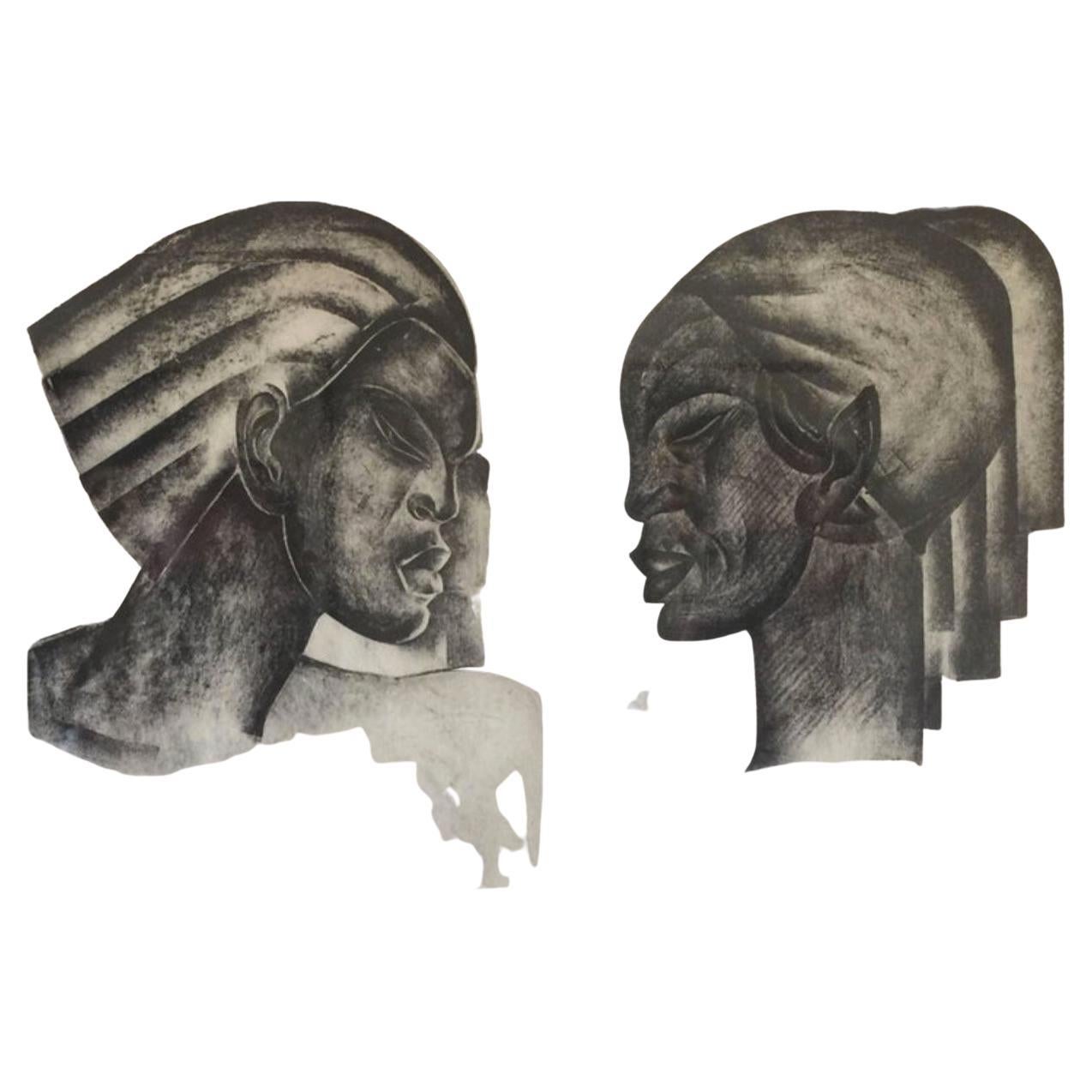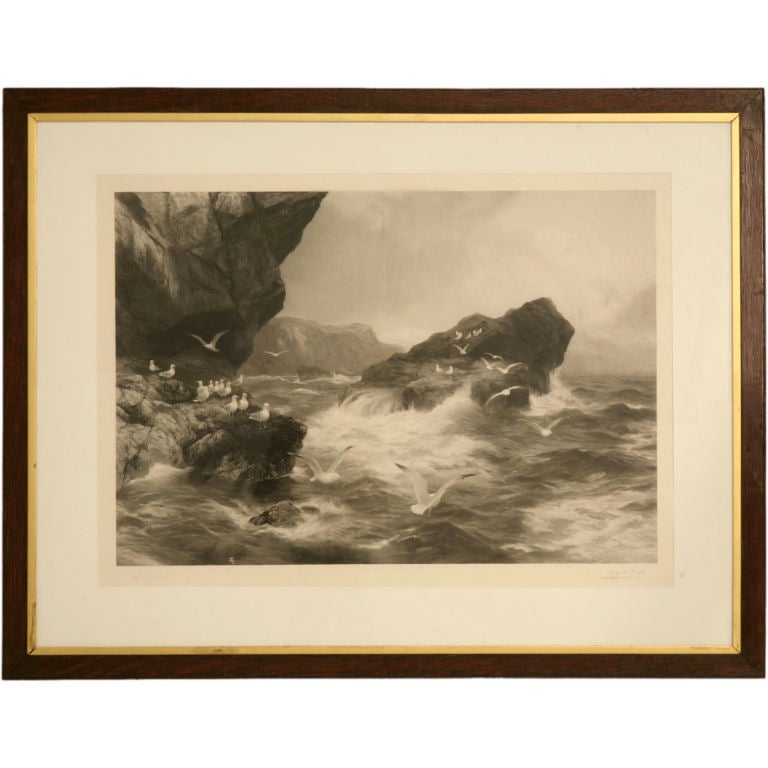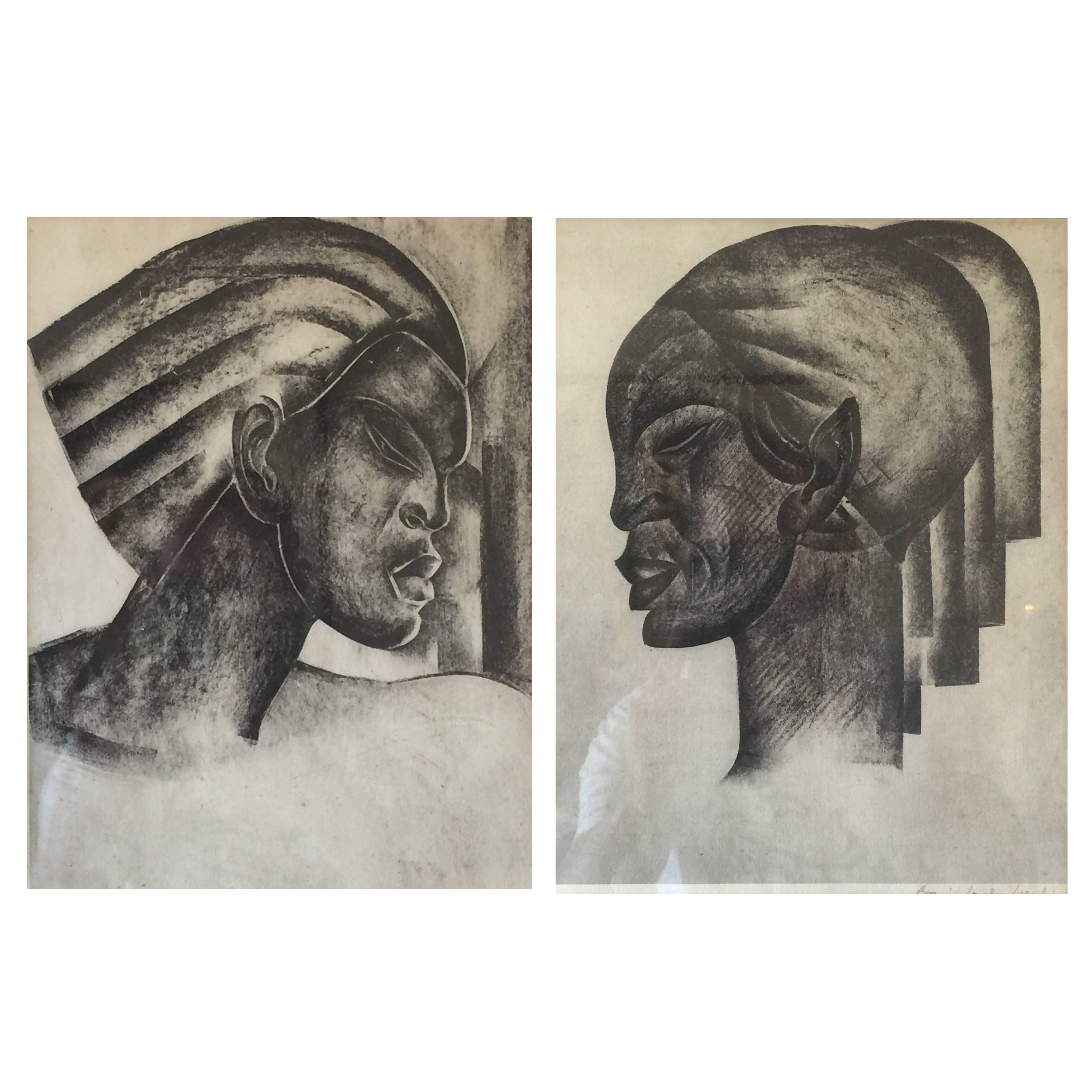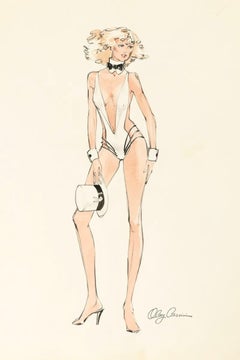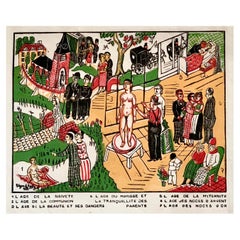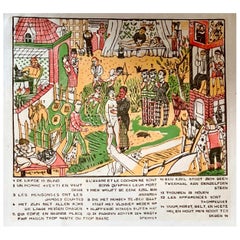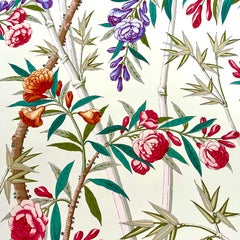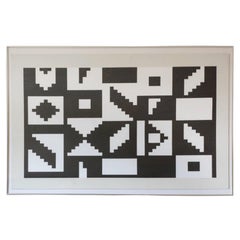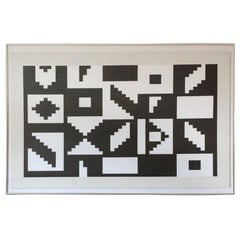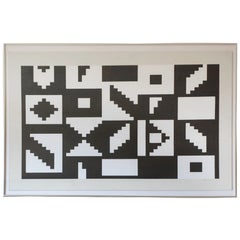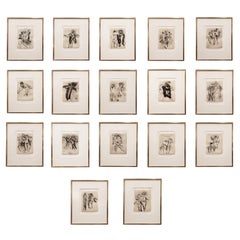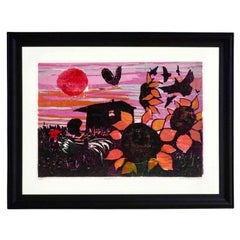
Walter Henry Williams Sunflowers at Sunset Woodcut, Signed, Numbered, 1959, USA
View Similar Items
Want more images or videos?
Request additional images or videos from the seller
1 of 5
Walter Henry Williams Sunflowers at Sunset Woodcut, Signed, Numbered, 1959, USA
About the Item
- Creator:Walter Williams 1 (Artist)
- Dimensions:Height: 14.5 in (36.83 cm)Width: 20 in (50.8 cm)Depth: 1 in (2.54 cm)
- Style:Modern (Of the Period)
- Materials and Techniques:
- Place of Origin:
- Period:
- Date of Manufacture:1959
- Condition:Wear consistent with age and use. Dimensions provided are of sight and work has not been examined out of frame. Sheet shows undulation throughout and areas in lower right quadrant where pigment has adhered to glass at several high points. Image presents well. Framed behind acrylic me.
- Seller Location:Brooklyn, NY
- Reference Number:1stDibs: LU4190332442972
About the Seller
5.0
Platinum Seller
Premium sellers with a 4.7+ rating and 24-hour response times
Established in 2017
1stDibs seller since 2018
650 sales on 1stDibs
Typical response time: 1 hour
Authenticity Guarantee
In the unlikely event there’s an issue with an item’s authenticity, contact us within 1 year for a full refund. DetailsMoney-Back Guarantee
If your item is not as described, is damaged in transit, or does not arrive, contact us within 7 days for a full refund. Details24-Hour Cancellation
You have a 24-hour grace period in which to reconsider your purchase, with no questions asked.Vetted Professional Sellers
Our world-class sellers must adhere to strict standards for service and quality, maintaining the integrity of our listings.Price-Match Guarantee
If you find that a seller listed the same item for a lower price elsewhere, we’ll match it.Trusted Global Delivery
Our best-in-class carrier network provides specialized shipping options worldwide, including custom delivery.More From This Seller
View AllWhite Bunny Drawing by Oleg Cassini for Playboy October 1979, Signed
By Oleg Cassini
Located in Brooklyn, NY
White Bunny Drawing by Oleg Cassini for Playboy October 1979, Signed.
Illustration of a woman wearing a white body suit, choker, and hat. Signed by Oleg Cassini. Notice the body suit is in the shape of the head of a bunny with clever use of the 'whiskers'.
Approximate Measurements: Length: 11" Width: 14"
Property from the Collection of Steven Rosengard, Chicago, Illinois
This original drawing was commissioned by Playboy and included in the October 1979 issue of Playboy Magazine (pages 225-227) in a feature that included works from designers such as Bill Blass, Oleg Cassini, Edith Head, Fernando Sanchez, and Monika Tilley, among others, who create their versions of the Playboy bunny costume. Candace Collins can be seen modeling some of the designs in the feature.
Oleg Cassini is an icon of twentieth-century fashion. Though born to Russian aristocracy and raised in Italy, he built a fashion empire that was unmistakably American. Cassini is perhaps best known for the hundreds of designs he created for First Lady Jacqueline Kennedy (see images 4-8), but his achievements as a collector, connoisseur, and quintessential twentieth-century man go far beyond Camelot.
In 1913, Oleg Cassini was born in Paris to the Russian diplomat Count Alexander Loiewski and Countess Marguerite Cassini, a Russian aristocrat of Italian ancestry who also had an interesting link to America. The daughter of Count Arthur Cassini, Russian Ambassador to the United States during the McKinley and Roosevelt administrations, Marguerite dazzled turn-of-the-century Washington as her father’s official hostess and left her mark on the capital city. Stationed in Denmark when the Russian Revolution toppled the czar, Ambassador Cassini and family were exiled to Switzerland before settling in Florence, Italy, where young Oleg was raised. A true Renaissance man, he spoke Russian, French, and Danish before adding Italian and English; he studied medieval and modern European military history and costume and learned to draw; he learned horseback riding, fencing, and the art of chivalry; and, most importantly, he came to understand the struggles of the Russian titled class and other European aristocrats in the wake of the Russian Revolution and World War I.
Countess Cassini started a successful fashion business in Florence, and soon the talented young Oleg was sent to Paris to sketch the latest collections for recreation in Italy. In Rome in his early 20s, Cassini created fashions for high society women and designed for a few films, which planted the seed for his move to Hollywood. The drive to reinvent himself brought Cassini to America in the 1930s; in his autobiography he describes arriving nearly penniless in mid-Depression New York City where his title as an exiled Russian Count meant even less than in war-devastated Europe. Down and out, Cassini struggled for employment, having sketching skills but no knowledge of the wholesale trade required for survival in Manhattan’s Seventh Avenue fashion district. However, he excelled at making connections, and Cassini slowly entered New York society. He was soon joined by younger brother Igor (who had studied in America and travelled with the young Emilio Pucci) and his parents, the once-dazzling Countess and his father, the displaced diplomat still loyal to Russia. The family settled in Washington, D.C., and Igor worked his way up the Hearst newspaper chain to become the famous society columnist Cholly Knickerbocker.
In New York, Oleg Cassini married the troubled socialite Merry Fahrney (who would go on to marry eight times), but the marriage ended in scandal for Oleg, and he decided to follow his original intention and head for Hollywood. Despite initial difficulties, Cassini gained access to Hollywood’s elite (partially through his skills on the tennis court), and was soon hired as a designer at Paramount Pictures alongside the redoubtable Edith Head. In her 1941 film debut I Wanted Wings, Veronica Lake wore a memorable Cassini design. That same year, Cassini met and married the newest young Hollywood star on the scene, the beautiful 20th Century Fox–talent Gene Tierney.
With the outbreak of World War II, Cassini enlisted in the Coast Guard but was transferred to the U.S. Army Cavalry which allowed officers of foreign birth. He attended basic training at Fort Riley, Kansas, and the horsemanship he learned as a boy served him greatly. He attended Officer Candidate School and reached the rank of First Lieutenant (he also became an American citizen at this time, losing his title of Count). Cassini spent several years posted at Fort Riley, where Tierney joined him before he landed a convenient military post in Hollywood. As Tierney’s career thrived (she played the title role in Otto Preminger’s Laura in 1944), she was able to assert her influence over 20th Century Fox’s head Daryl Zanuck, who hired Cassini as designer for Tierney on her 1946 film The Razor’s Edge, which proved to be a brilliant showcase for his talents. The pair separated the same year and, again seeking reinvention, Cassini re-established himself in New York City as a fashion designer. By 1950, the Oleg Cassini label was born.
Combining his knowledge of Old World and modern Europe, Hollywood, the tennis courts of Palm Beach and Newport, and of course, New York City, Oleg Cassini invented a new brand of fashion that was distinctly American and of its moment. For his first collection, Cassini took to the stage, narrating the looks and imbuing the scene with his personality, unusual in an industry where the designers typically remained backstage and the models were called by number over a PA. The first collection was a smash — the president of Lord & Taylor devoted all of their storefront windows to his designs — and by 1955 sales had reached $5,000,000. Oleg Cassini’s career had turned a very positive corner.
Cassini spent the early 1950s traversing the country, personally selling his collections to department stores in the interior, something his predecessors had never done, and moving between the Hollywood and New York scenes. Cassini’s brother Igor coined the term “the Jet Set” for this generation that constantly flew from New York to Los Angeles (then a ten-hour flight), Las Vegas, Paris, Rome, and the Riviera. In 1954, Cassini set out to woo Grace Kelly and sent her roses every day. The two were briefly engaged before her marriage to Prince Rainier of Monaco.
In December 1960, Cassini’s career-defining opportunity came when he was chosen by Jacqueline Kennedy to design her fashions for the White House. Cassini had long known Joe Kennedy and his war-hero son John, and had first met Jacqueline Bouvier before her marriage in the early 1950s. Invited by President-Elect Kennedy to meet Jacqueline at Georgetown Hospital (she had just given birth to son John Jr.) to present to her drawings of potential dresses and First Lady looks, Cassini worked furiously to prepare a new line for the First Lady. Mrs. Kennedy had always had her clothes made by the top French couturiers of the day, but for the White House she wanted an American designer. Cassini wrote in his autobiography that he told the First Lady: “‘You have an opportunity here,’ I said, ‘for an American Versailles.’ She understood completely what I was trying to communicate; she began to talk excitedly about the need to create an entirely new atmosphere at the White House. She wanted it to become the social and intellectual capital of the nation” (Oleg Cassini, In My Own Fashion, 1987, p. 327).
Mrs. Kennedy loved Cassini’s design for a gown to wear to the Inaugural Gala (she had already ordered a dress from Bergdorf’s for the Inaugural Ball), and Cassini was selected as the First Lady’s designer and was soon dubbed the “Secretary of Style.” From 1960 to 1963, Oleg Cassini would design over 300 items for Mrs. Kennedy, creating the “Jackie Look” that contributed not only to a fashion revolution but also the dawn of a new age. Cassini wrote that “Jackie played a very active role in the selection of her clothes. She loved brilliant colors — pistachio, hot pink, yellow, and white among others. Her sense of style was very precise; she would make editorial comments on the sketches I sent her. She always knew exactly what she wanted; her taste was excellent” (Oleg Cassini, In My Own Fashion, 1987, p. 334).
After the Camelot years, Cassini’s business flourished and grew into a major industry; his name appeared on everything from couture to tennis-, sport-, and swimwear, car interiors, housewares, and perfume. He collected beautiful and rare artwork, arms and armor, and antique furniture, and lived the lifestyle projected by his image. From this period onward, Cassini also came to live in important homes. Of his Gothic Gramercy Park townhouse on Manhattan’s 19th Street he would write imaginatively, “I walked into the foyer and immediately fell in love. It was a place unlike any other in New York, a sixteenth-century Dutch house transported brick by brick from Europe by the Wells Fargo family in the early twentieth century. There was a vaulted, twenty-foot ceiling in the living room, leaded windows, elegantly carved wood paneling...
Category
Mid-20th Century Italian Drawings
Materials
Paper
$2,236 Sale Price
35% Off
Modern Northern European woodcut print Seven Sacraments '1935' by Edgard Tytgat
Located in Brooklyn, NY
Tytgat's style can be described as a simplification of reality with an intended naivety. He derived his inspiration mainly from daily life and incorporated these experiences in his own dream world. For the present lot Tytgat was inspired by the traditional seven sacraments in the Church: Baptism, Confirmation or Chrismation, Eucharist, Penance, Anointing of the Sick, Holy Orders, and Matrimony. Tytgat also references the Flemish tradition of visual representation of these sacraments that dates back all the way to age of Jan van Eyck and Rogier van der Weyden...
Category
Early 20th Century Prints
Materials
Paper
$320 Sale Price
78% Off
Modern Northern European Woodcut Print Flemish Proverbs ‘1934’ by Edgard Tytgat
Located in Brooklyn, NY
A woodcut in color on Japanese paper: "Flemish Proverbs," 1934. Signed and dated.
Tytgat's style can be described as a simplification of reality with an intended naivety. He deriv...
Category
Early 20th Century Prints
Materials
Paper
$1,280 Sale Price
20% Off
Brunschwig and Fils Bamboo Grove Handprinted Floral Wallpaper, Celadon Cream USA
By Brunschwig & Fils
Located in Brooklyn, NY
Brunschwig and Fils bamboo grove handprinted floral wallpaper, Celadon Cream, USA. Listing is for a triple roll (15 yards x 36”). Gorgeous chinoiserie print. No longer in production.
Category
Late 20th Century American Chinoiserie Wallpaper
Materials
Paper
$736 Sale Price / item
69% Off
Angelo Testa Abstract Marigold and Black Hard-Edge Color Field Painting, 1962
By Angelo Testa
Located in Brooklyn, NY
A watercolor on board by Angelo Testa. Signed and dated (1962)
Measures: 29½ H × 19½ W in.
Angelo Testa was one of the foremost American textile designers of the mid-20th century. In 1945, he became the first graduate of the Institute of Design (formerly the New Bauhaus) in Chicago, where he studied under artist László Moholy-Nagy, architect George Fred Keck, and weaver Marli Ehrman...
Category
Mid-20th Century American Mid-Century Modern Paintings
Materials
Paint
$3,840 Sale Price
82% Off
Jill Freedman Kissing FDNY 1976, Black & White Photo on Kodak Endura, Signed
Located in Brooklyn, NY
Jill Freedman Kissing FDNY 1976, black & white photo on Kodak Endura, Signed. Image also known as ‘Brotherly Love.” This is a black and white photograph ...
Category
Vintage 1970s American Photography
Materials
Paper
$4,104 Sale Price
40% Off
You May Also Like
Signed and Numbered Yaacov Agam Lithograph: Colors of Love
By Yaacov Agam
Located in Los Angeles, CA
Signed and numbered Yaacov Agam, colors of love, Serigraph.
Category
Vintage 1970s French Prints
Materials
Paper
Signed and Numbered Yaacov Agam Lithograph Colors of Love
By Yaacov Agam
Located in Los Angeles, CA
Signed and numbered Yaacov Agam, colors of love, Serigraph.
Category
Vintage 1970s French Prints
Materials
Paper
Signed and Numbered Yaacov Agam Lithograph: Colors of Love
By Yaacov Agam
Located in Los Angeles, CA
Signed and Numbered Yaacov Agam, Colors of Love, Serigraph
Category
Vintage 1970s French Prints
Materials
Paper
Willem De Kooning Complete Set of 17 Lithographs Each Signed and Numbered 1988
By Willem de Kooning
Located in New York, NY
Seventeen Lithographs for Frank O'Hara, New York, Limited Editions Club, 1988 the complete set of 17 signed and numbered lithographs in colors by Willem De Kooning, title page, and justification, on Chine appliqué, numbered 51 of 60 (there were also 12 with opposite facing text, and 550 bound copies with the lithographs appliquéd to the text pages), all with full margins and beautifully framed. Comes with original black cloth-covered portfolio with black leather label and gilt stamped title (very minor wear) and original purchase paperwork from Baby Jane...
Category
Vintage 1980s American Modern Prints
Materials
Wood, Paper
Brassaï Lithography Hand Signed
By Brassaï
Located in Barcelona, Barcelona
Lithography hand signed by Brassaï from the book "Historie de Marie"
Limited edition of 12/ 126
With some moisture spots
Framed on a 20th century ...
Category
Vintage 1940s French Mid-Century Modern Drawings
Materials
Paper
$4,333 Sale Price
25% Off
Nicola Simbari "Deux Clowns" Silkscreen Print, Signed
By Nicola Simbari
Located in West Palm Beach, FL
Nicola Simbari (Italian b. 1927)
"Deux Clowns" signed Simbari in pencil, numbered 134/300, published 1979.
One of five editions comprising suite entitled Cirque Simbari
Silkscree...
Category
